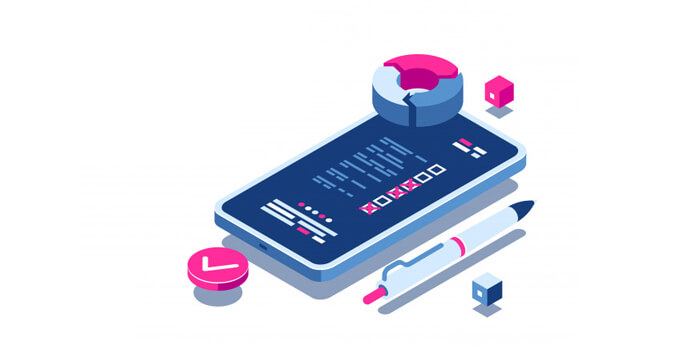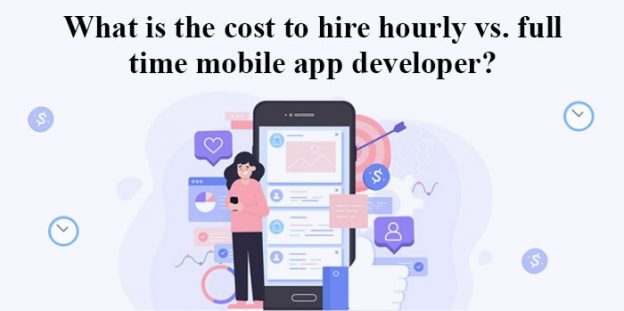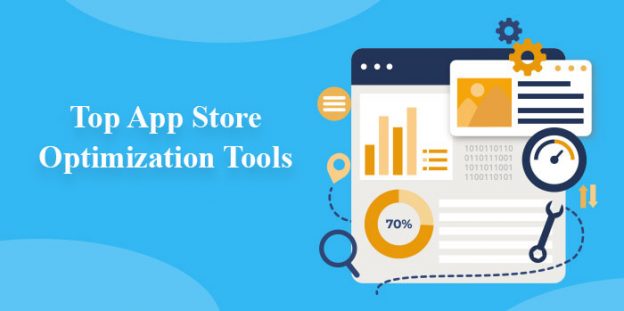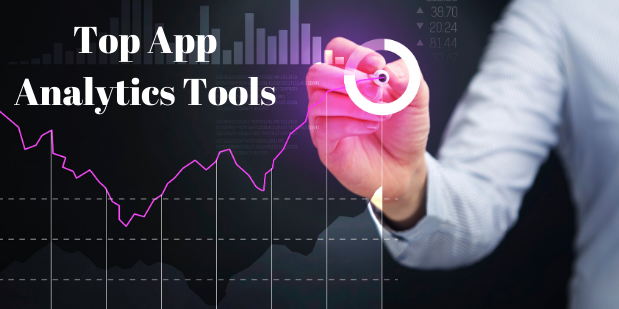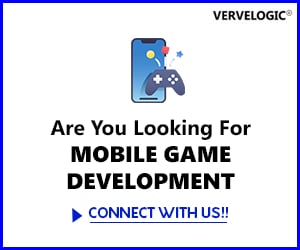How to get a patent for your mobile app?
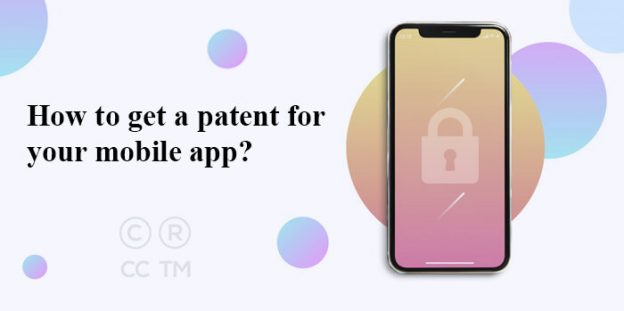
Mobile apps have clearly become a big business due to billions owning smartphones. One needs to have a foolproof idea in order to come up with an app and make it a big hit in the market. While developing your idea, you have to be unique as well as aware of the current demands of the market.
You have to look at the resources, key activities, value proposition, how the whole mobile app development company adopts the process, and many more associated things. It is undoubtedly a tough job out of which we expect a good return. Now, if you have an idea but are scared of copycats stealing your concept, you always have the option to get a patent.
To get a patent for your app, you need to know a lot about it like how it is going to work, what would be the features and in short, all the aspects that explain everything to a stranger about your app.
If you are planning to generate revenue out of your app, which you definitely would, then it is necessary to talk about patents. Patents basically work as a protector of your intellectual property.
Before we move ahead, let us know what Intellectual property rights are and how the terms patents, copyright and trademarks are closely related yet different.
What is Intellectual Property?
Intellectual property or IP refers to some kind of invention, literary work, or artistic creation such as designing, symbols, names, or anything that is a creation of the mind and has not been brought to the world earlier.
Why do patents for mobile apps?
The rising number of patents of apps is due to the increase in the number of research and development activities in every domain. More R&D demands for more analysis and motivates businesses to do patents for their mobile apps.
There are many sectors like healthcare, IT, and manufacturing that need patents for their market solutions. this demand has increased due to the major interest of businesses in professional intellectual solutions.
According to a market report, the global patenting for mobile apps filled more than 2 lakh 75 thousand in 2020, which is very high compared to previous years. As with the advancement in technologies, the market is in high demand for analytics and advanced exploration in deep learning.
The global patent market size is estimated at $907M in 2022, accelerating with a 12.7% hike to reach $2099M in 2029.
Coming to the fact, US national institute of health promotes analytics on its platform and contributes with its data solutions that are patented later. it is a medical health institution.
For analytics and cloud-based platform companies, it is very important to do patents to secure their solutions in real time and from any threat.
What are Intellectual Property Rights?
Intellectual property can be protected by law often known as Intellectual property rights through which you can restrict anyone from using or selling a similar kind of creation. Moreover, you can earn financial benefits in return for your permission to use or sell it.
By striking the correct balance between the interests of innovators and public interest, the IP system strives at fostering an environment that promotes the flourishing of creativity and innovation. There are three major terms coming under IPR.
1. Copyright:
Copyright is defined as an exclusive right that is given to the creator of creative work, maybe literary, artistic, musical, or of any other form. These laws have been made in order to protect the original expression of an idea. Copyrights granted by the law of a certain state, do not extend beyond the territory of that specific jurisdiction.
However, it may vary from state to state or country to country. Sometimes, agreements are made with other countries on procedures applicable when works “cross” national borders or national rights are inconsistent.
In simpler terms, the basic concept behind providing exclusive rights to the owners is to allow them to secure their work against thefts and also receive economic rewards. There are three basic requirements a work needs to have in order to protect itself by copyright.
The creation has to be creative, original as well as fixed, which means it should be fixed in a tangible medium of expression.
2. Trademark:
Trademark protection also comes under IPR which is a right given to protect names, symbols, devices, designs, or words associated with goods and services. If we talk in technical terms, “Service mark” is the term used for services whereas trademark is used for both products as well as services.
A trademark is given to the owner as an exclusive right through which he/she can protect the usage of a particular symbol or word by some other individual or agency. A trademark is not in place to prevent another individual or mobile app development company from making or selling the same goods or services under a clearly different mark.
3. Patent:
A patent system has been designed in order to encourage inventions that are useful for people and unique in nature. A patent is a right granted to an inventor by the federal government that permits the inventor to exclude others from making, selling, or using the invention for a period of time.
Many a time people get confused between copyright, trademark, and patent. Though, to get one, you need to be sure what you need to apply for and what means exactly. Here’s how you can differentiate between the three.
Trademarks are generally filed by business or product owners for the protection of names, slogans, words, symbols, images, and design elements that are used to identify that particular firm and distinguish the same from others. If we talk about copyright, it is filed by artists, authors, architects, choreographers, and other creative professionals.
The tangible form of an idea can be copyrighted but yes, it has to be unique and useful. Patents are generally filed by inventors or designers who protect inventions with an improved or new function.
All have their own benefits through which you can differentiate them. Do not get worried if an item comes under multiple categories because it is totally natural and common.
Since, this article is going to be purely about how to take a patent for your mobile app development, here is a detailed description of what are patents and how the application process works and get a green tick.
What is a Patent?
In legal terms, a Patent is defined as the right which is granted to an inventor of a product/service/idea from the government authority in order to restrict others from making or selling that invention for a period of time.
The patent is a part of the Intellectual property law that also consists of rights like trademarks, copyright, etc. but those are different forms that should be confused with patents as they have their own different legal definitions.
Before we go ahead, it is important for you to understand that patents can take many forms. Here are the types of patents one can apply for.
1. Utility patent:
A utility patent covers the creation of a new, improved, and useful product, process, es or machine. It is also called a patent for invention according to which any other mobile app development company or individual is not allowed to make, use or sell the invention without authorization from the creator.
This is the most common form of patent that most people talk about. However, these are really tough to obtain. You have to get involved in a time taking documentation process then it is also expensive to undertake.
2. Provisional patent:
A provisional patent works very closely with a utility one. The provisional patent involves the formation of lesser formal documentation which proves that the inventor has complete possession of the invention. The investor needs to figure out how to make the invention work. Once the process is completed, this form of application goes under the Patent Pending section.
The work does not end up here. Now, if the investor fails to submit a formal utility patent within one year, this filing date would be lost. Any public disclosures which are made depending on that provisional patent application will now count on public disclosures to the United States Patent and Trademark Office.
3. Design patent:
As the name clearly indicates, a Design patent would protect your designs from being copied by any other individual or business running in the industry. For example, the design of a bottle, shoe, jewelry, etc. The document associated with such a kind of patent mostly contains designs related to the invention.
Since there are a few words used in a design document, it is pretty much tough to simply search for the design patents. A design patent can only be granted if the product has distinct surface ornamentation or configuration or both. Filing for a design patent costs comparatively lower than one for a utility patent.
4. Plant patent:
A plant patent is an IP right that protects a unique and new plant’s characteristics from being sold, copied, or used by others. A patentable plant can be natural, somatic, or even bred.
Can apps be patented?
Yes! Because an app is basically a component of interaction methods which is a process that runs on your phone connecting to a remote server that is useful either to store data or process it. However, the code on which the software runs cannot be patented as it already comes under the category of law covered by copyrights.
A mobile app comes in the category of “methods” or “process” which can definitely be patented along with other things like machines, the composition of matter, articles, etc.
Before proceeding any further, you should first know whether your idea or app is patentable or not. It should not be a clone of the Uber you are coming up with. Well, it was just an example! What we are meaning to say here is that a product can only be patented if it does not exist in the market already.
Let us have a look if your app is eligible for the application or not.
Is your app eligible for a patent?
Checking the eligibility of your app to get patented is the first and foremost step of getting a patent. You need to perform a patent search to look for similar ideas the market has been bombarded with earlier. Just because an app can be patented does not mean your app is eligible for it.
The US Patent and Trademark Office suggests doing a thorough patent search before any application. You can search for the related keywords, especially the ones that are related to the core functionalities.
Why do you have to do this homework? It’s because even if you get a patent, you can be charged for patent infringement. The patent and trademark office makes an effort to look that your app does not violate any other patent but does not guarantee it.
You have to keep in mind that it is not just an idea that can be patented. You have to provide enough details on how the app is going to work as well.
There are certain elements that cannot be patented such as the Law of nature, Laws of Physics, mathematical formulas,s and things related to the human body.
Evaluation criteria:
Your app idea has to be “Novel” which means there should be differences from all the earlier inventions. Moreover, there should also be a consequential impact of the difference. Coming up with a difference is not only important to get a patent but also to attract a significant amount of traction.
An already-existing idea might not attract an audience in the long run even if you try to attract them with offers initially.
Next up, your app has to be “non-obvious” which means that someone skilled in your industry line should not consider it as an unexpected development. It is the difficult most criterion to pass as it is a subjective notion. What you might find unique and useful the other person cannot feel so.
The last one, your app has to be “useful” which means your app has to work at least in theory. It is not necessary that it should offer something to watch or play but yes, it should at least be something to the user. Rather than just claiming ownership, you should know and clearly explain how this app is going to work.
What are the features it is going to offer, where is it useful, and is it even needed are some of the questions that will take you to the conclusion of whether your app would qualify the “being useful” criteria or not?
How to apply for a Patent?
What is the process to apply for a patent? Have this question in mind? Don’t worry. We have compiled your procedure that distilled patent process smoother. How it works, let’s have a look.
1. File a provisional patent application
By now, you must be aware of the terminologies related to patent applications. Would you like to go for a provisional application or a non-provisional one? Let me get straight to the point. Most of the developers first go for a provisional patent application as it lets them secure a filing date till then they can prepare stuff.
Still, one needs to provide many details like flow charts, drawings, content, and other visuals that can be clarified later. But yes, it eliminates much of your efforts. Moreover, you will get an idea of how things work so that you get nervous or stressed out later while working on more complex things.
When a provisional application gets a green tick, your application goes into a pending status which gives you a timeline of 1 year in which you can easily collect resources for the app completion.
Moreover, you will get enough time to see if your app idea is even going to work or not. When you secure a filing date, you will be on the safer side as it helps authorities determine who was first to file.
There are some charges you need to transact in order to apply which can carry vary nation-wise significantly.
Since your app goes into pending status after applying for the provisional patent. You should be ready with all the stuff required to get a real and final patent before the filing date. Failing to do so, your application gets canceled simply or you might have to face other circumstances.
2. File a regular patent:
After filing a provisional patent, you need to go for a regular one within a year. If you do not do so, you will simply lose your filing date. A real and detailed examination is carried out once you file for a regular patent.
Your patent application would be broken into four parts- Specification, Claims, Abstract, and Drawings.
If you are under the assumption that it’s a day or a month process, then let me tell you it might even take your application a time period of 2-3 years to get a green tick from the authorities. The examiner would not straight away approve it, it will need a lot of refining as time passes. You might have to carry out a lot of revisions.
If you are looking forward to seeing some examples, then we would like to tell you that Google has an altogether different search engine for patents. If you go to patents.google.com and perform a search, you will get to see a lot of documents that can give you enough idea about how it works.
Let us go into detail.
a. Specification:
The specification would be a collection of information on what makes your application different from all the other existing concepts in the market. It should be so clear that even a novice can understand how to create the app from scratch and what are the important aspects without seeking your help. You also need to disclose the best mode of creating this application.
The specification would be consisting of a title, background, summary, and description. The title needs to be short and clear enough to understand the idea of your app. The background information has to be elaborated in terms of the context of the invention.
It should include all relevant theories along with a clear explanation of how your app is differentiated from all other prior inventions.
In the summary part, you have to provide a brief description of how the app is going to work and solve the existing problems in the market. Basically, you need to summarize the whole idea so well that the examiner can get a lot of things looking at just the summary. Then comes Description which has been descriptive obviously.
You need to provide a thorough explanation of your app in this section and it has to be so clear and to the point that even anybody halfway competent in the field would be able to replicate your app.
b. Claims:
It is the most important part of your application in which you clearly state for which all parts of the application, you need ownership. You might not be eligible to take a patent for the whole app as there must be some sections that are already present in someone else’s patent.
You need to define the features which are unique and only generated for the first time so that they can be counted under inventions since patents are all about inventions.
c. Drawings
If there is a visual representation that your patent uses, then you will definitely have to include the visual representations and related figures in the document. If you are confused about what to include then you can go through some samples, maybe some already approved patents in your industry, and see where your idea stands or what things you can include in this particular section.
d. Filing:
There are two options to file the application. You can either mail it or file it electronically. If you are sure that the application is so refined that it can get approved in one go then, filing electronically can be easy for you but since that is slightly impossible, you can file by mail. Make sure to keep copies of your application.
Include the title and application filing date with your mail. You can use a self-addressed postcard in order to receive your receipt.
Conclusion
Mobile app companies have a period of 12 months to file a provisional patent application after they have introduced their product to the market. Then, they have additional 12 months to file a full patent else the filing date gets lost. In the US, according to the agency’s rule, “provisional application automatically becomes abandoned when its pendency period expires 12 months after the provisional application filing date”.
Either you can create the document or you can also take help from consultants out there who will add a pace to the work. In all, patents are taken to protect your app from being copied still many would be there who will add a fresh twist to the application and might release it along with your app. Here is a quick piece of advice!
Bear in mind to carry out rigorous marketing after you come up with that unique idea. People would not automatically come to you. You need to make efforts in order to be visible.
Still, protecting Intellectual property is a complicated and time taking process that evolves at every level during its lifecycle. Whether we talk about research, innovation, or development itself, evolution does not encounter any halt.
VerveLogic can be your one-stop solution for mobile app development and web development because we have a team of experts and market experience. You can get your app or website developed at the best price possible.
Also, if you are looking for branding solutions or online marketing for your brand then you should check out VerveBranding and Verve Online Marketing today and make your brand stand out. We hope we have solved your every query regarding the app icon and how to create an amazing app icon. Let us know in the comments and questions.

